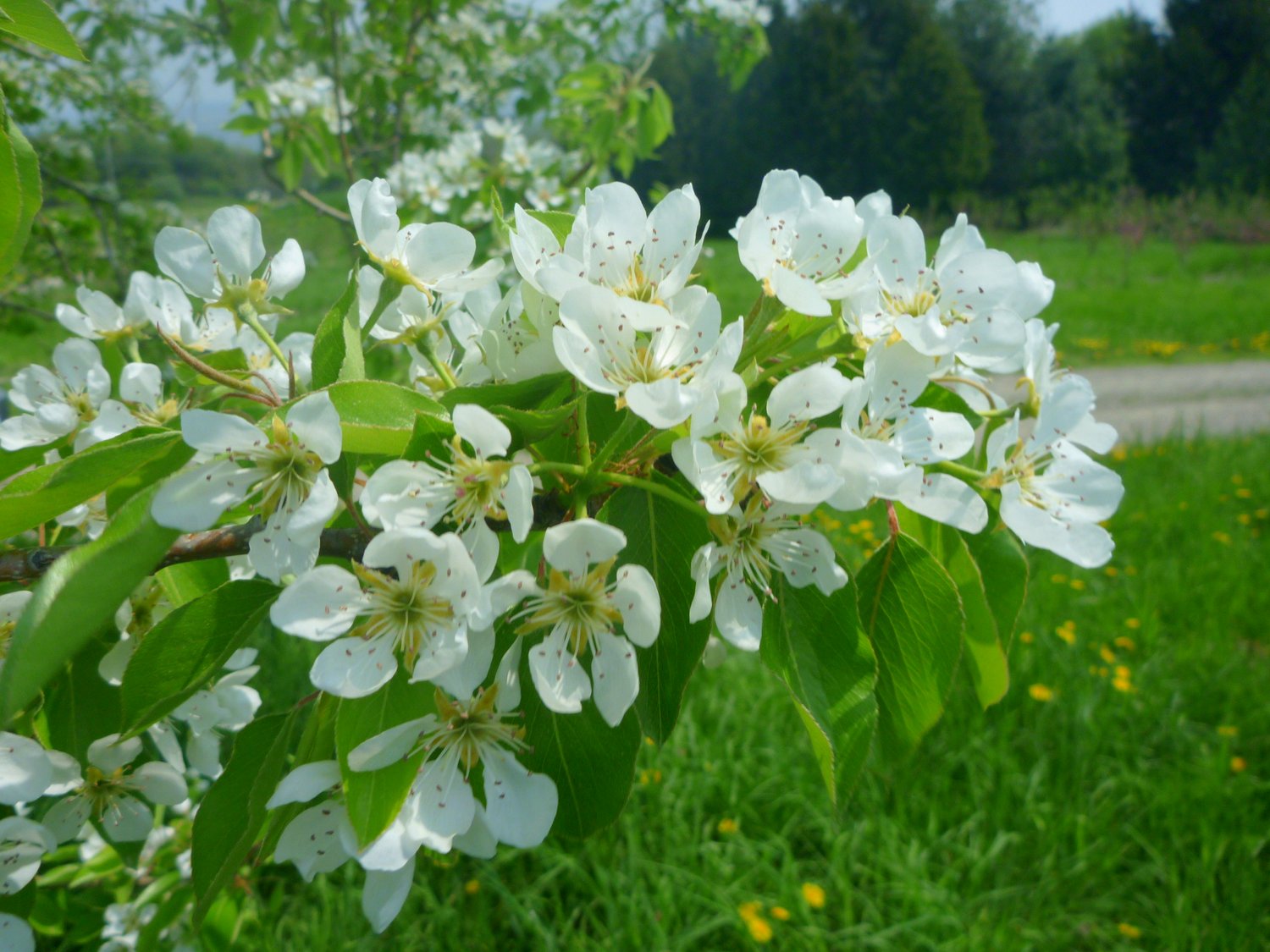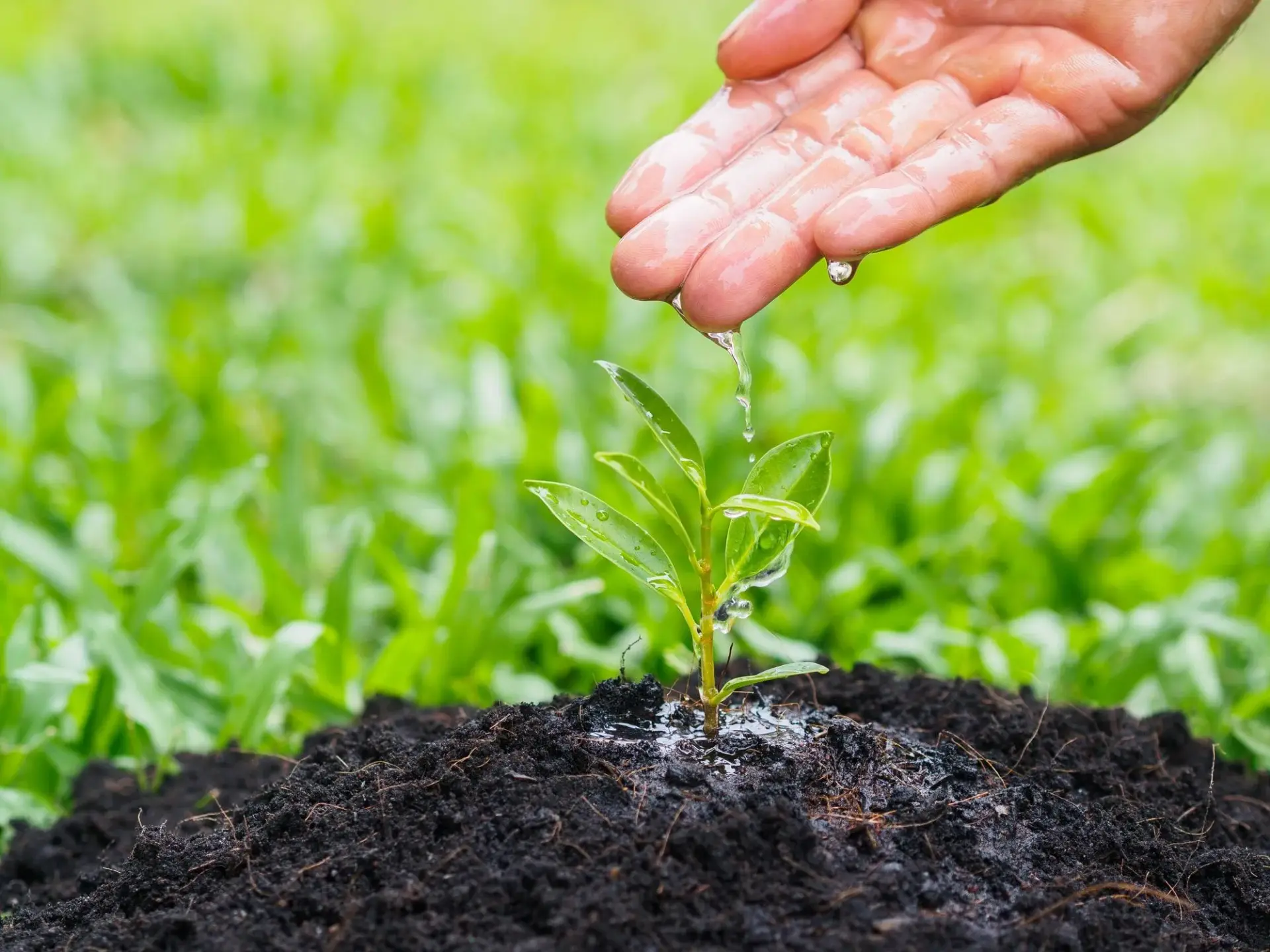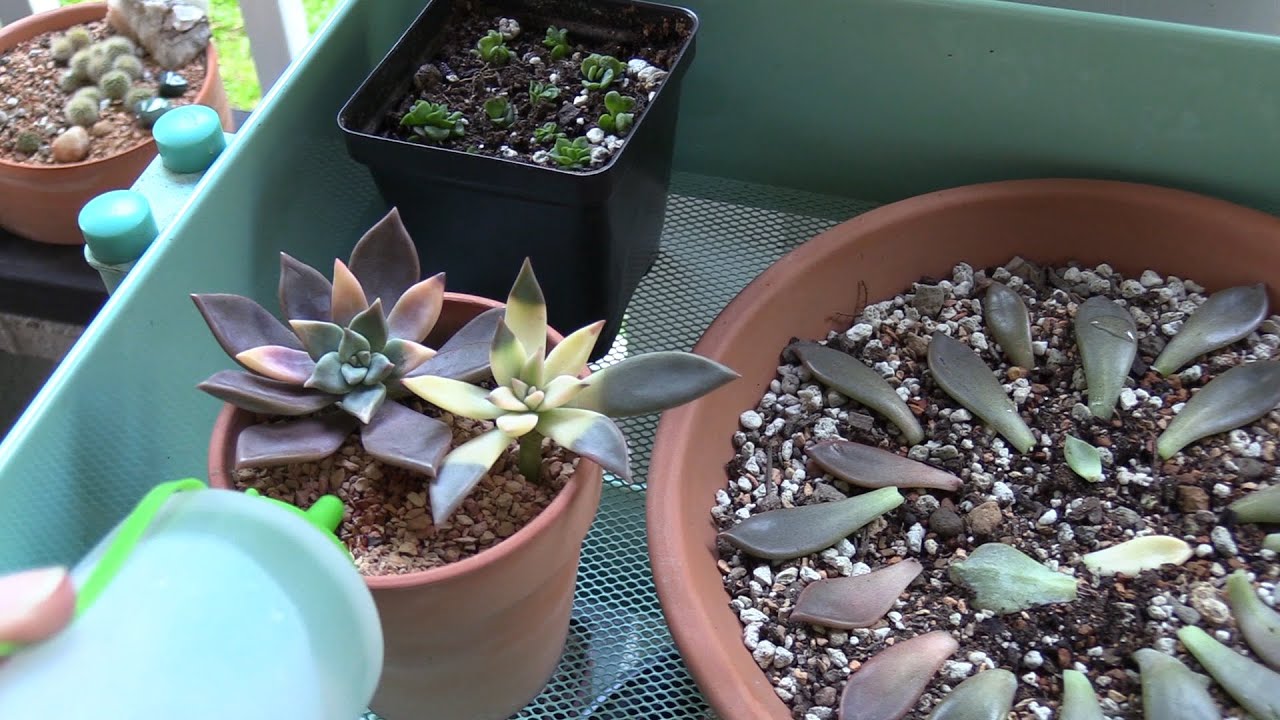Home>Gardening Techniques>Plant Care>How Often Do Magnolia Trees Bloom


Plant Care
How Often Do Magnolia Trees Bloom
Modified: January 22, 2024
Learn about the plant care for magnolia trees and discover how often they bloom. Enhance your gardening skills with our expert tips and advice.
(Many of the links in this article redirect to a specific reviewed product. Your purchase of these products through affiliate links helps to generate commission for Chicagolandgardening.com, at no extra cost. Learn more)
Table of Contents
Introduction
Magnolia trees, renowned for their exquisite and fragrant blooms, are a beloved addition to gardens and landscapes. These stunning flowering trees can bring a touch of elegance and beauty to any outdoor space. However, if you are new to magnolia tree care, you may be wondering just how often these trees bloom.
The frequency of magnolia tree blooms can vary depending on several factors, including climate, soil conditions, and care. Understanding these factors can help you optimize the blooming potential of your magnolia trees and ensure they thrive in your garden.
In this article, we will explore the various factors that influence the bloom frequency of magnolia trees and provide tips for encouraging abundant blooms. Whether you are a homeowner with a magnolia tree in your backyard or a gardening enthusiast looking to cultivate these majestic trees, this guide will help you understand the blooming patterns and how to care for your magnolia trees.
So, let’s dive into the world of magnolia trees and discover the secrets behind their captivating blooms!
Factors that Influence Bloom Frequency
Several key factors influence the bloom frequency of magnolia trees. By understanding these factors, you can provide the optimal conditions for your trees to bloom abundantly. Let’s explore them in more detail:
- Climate and Temperature: Magnolia trees thrive in temperate climates, with a preference for mild winters and warm summers. They tend to bloom more profusely in regions with a distinct winter and spring season. Extreme temperatures, such as prolonged frost or heatwaves, can negatively impact blooming. It is important to choose magnolia tree varieties that are suitable for your climate zone to ensure optimal bloom frequency.
- Day Length and Sunlight: Magnolia trees require a certain amount of sunlight each day to trigger blooming. They typically need at least six hours of direct sunlight to produce abundant flowers. Insufficient sunlight can lead to sparse blooms or no blooms at all. Ensuring that your magnolia tree is planted in a location with ample sunlight will encourage regular blooming.
- Soil Conditions: The soil pH and nutrient levels play a crucial role in the bloom frequency of magnolia trees. These trees thrive in slightly acidic to neutral soil with good drainage. Testing the soil and amending it with organic matter or fertilizer can help create the ideal conditions for blooming. It is important to provide a well-balanced soil environment to promote healthy growth and abundant blooms.
- Pruning and Care: Proper pruning and care practices can significantly impact the bloom frequency of magnolia trees. Pruning should be done selectively, removing dead or crossing branches, to encourage new growth and ensure air circulation. Over-pruning can reduce blooming potential. Regular watering, especially during dry spells, and adequate mulching can also contribute to healthy tree growth and blooming.
Understanding these factors and tailoring your care approach accordingly can greatly enhance the bloom frequency of your magnolia trees. By providing the right climate conditions, sunlight exposure, soil environment, and care, you can enjoy the breathtaking beauty of vibrant magnolia tree blooms.
Climate and Temperature
The climate and temperature of your region play a crucial role in determining the bloom frequency of magnolia trees. These trees thrive in temperate climates with distinct seasons. While they can adapt to different climate zones, certain temperature conditions are more favorable for abundant blooming.
Magnolia trees generally prefer mild winters and warm summers. They require a dormant period during the winter months to prepare for blooming in the spring. A period of chilling is necessary for the tree to break dormancy and produce flowers. However, prolonged and extreme cold temperatures can damage the flower buds, resulting in reduced blooming or no blooms at all.
In regions with milder winters, magnolia trees are more likely to bloom profusely. The ideal temperature range for magnolia tree growth and blooming is typically between 20°F to 90°F (-6°C to 32°C). If the temperature falls below freezing for an extended period, the flower buds may freeze and fail to bloom in the following spring.
In areas with hotter climates, such as tropical or subtropical regions, certain magnolia tree varieties can still thrive. However, the higher heat and humidity levels can affect the blooming frequency. It is essential to choose magnolia tree species or cultivars that are better adapted to warmer climates to ensure optimal blooming.
When selecting a magnolia tree for your garden, consider the USDA hardiness zone recommendations for that specific species or cultivar. These guidelines provide valuable information about the temperature range in which the tree is best suited for growth and blooming. Choosing a variety that is well-matched to your climate will increase the likelihood of regular and abundant blooms.
In summary, the climate and temperature of your region directly impact the bloom frequency of magnolia trees. Mild winters and warm summers provide the ideal conditions, while extreme cold or heat can hinder blooming. By understanding the specific temperature requirements of the magnolia tree variety you choose and ensuring it is suited for your climate zone, you can maximize the blooming potential of your magnolia trees.
Day Length and Sunlight
Day length and sunlight exposure are crucial factors that influence the bloom frequency of magnolia trees. These trees require a certain amount of sunlight each day to trigger blooming. Understanding how day length and sunlight availability affect magnolia trees can help you optimize their blooming potential.
Magnolia trees typically require at least six hours of direct sunlight each day to produce abundant blooms. Sunlight provides the energy necessary for photosynthesis, which is essential for the tree’s overall growth and flower production. Insufficient sunlight can result in sparse blooms or no blooms at all.
One important aspect to consider is the placement of your magnolia tree. Planting it in an area of your garden that receives ample sunlight throughout the day is crucial for optimal blooming. Observe your garden and identify the spots with the longest exposure to sunlight. Placing your magnolia tree in or near these areas will ensure it receives the necessary sunlight for regular blooming.
Day length also plays a significant role in blooming. Different magnolia tree species and cultivars have varying blooming patterns and requirements regarding day length. Some varieties bloom in early spring when the days start to lengthen, while others bloom later in the season as the days become even longer.
Longer daylight hours signal to the magnolia tree that it is time to produce flowers. As the days lengthen, the tree’s internal clock is triggered, initiating the blooming process. Conversely, shorter daylight hours in late fall and winter signal the tree to enter dormancy and prepare for blooming in the next season.
It’s important to note that magnolia trees can also be sensitive to disruptions in natural day length patterns. Artificial lighting or streetlights that illuminate the tree during nighttime can interfere with its blooming cycle. Excessive lighting at night can trick the tree into believing that the days are longer, disrupting its internal clock and potentially affecting blooming frequency.
In summary, providing adequate sunlight and considering the day length requirements of your magnolia tree is vital for ensuring regular and abundant blooms. Plant your magnolia tree in a location with ample direct sunlight, and be mindful of any artificial lighting that may affect its natural day length pattern. By meeting the sunlight and day length needs of your magnolia tree, you can encourage a stunning spectacle of blooms in your garden.
Soil Conditions
The soil conditions in which magnolia trees are planted significantly impact their blooming frequency. These trees thrive in slightly acidic to neutral soil with good drainage. Understanding the importance of soil pH and nutrient levels will help you create an ideal environment for your magnolia tree to bloom abundantly.
Soil pH: Magnolia trees prefer soil with a pH range of 5.5 to 7.0. Slightly acidic to neutral soil allows for optimal nutrient uptake and root development. If the soil is too acidic or alkaline, it can negatively affect the tree’s overall health and blooming potential. Conduct a soil test to determine the pH of your soil, and if necessary, amend it with organic matter or suitable fertilizers to adjust the pH level to the ideal range for magnolia trees.
Drainage: Proper drainage is crucial for magnolia trees to prevent waterlogged conditions, which can lead to root rot and other diseases. Poorly drained soil can suffocate the roots and impede the tree’s ability to absorb water and nutrients. Ensure that your chosen planting location has well-draining soil, or consider improving drainage by adding organic matter or amending the soil with sand or gravel to create a looser, more porous soil structure.
Nutrient Levels: Magnolia trees require a well-balanced supply of nutrients to support healthy growth and blooming. Ideally, the soil should provide an adequate amount of essential nutrients, including nitrogen, phosphorus, and potassium. Conducting a soil test will help you determine the nutrient levels in your soil. Based on the results, you can amend the soil with organic fertilizers or specific nutrients to ensure the tree has access to the necessary elements for robust blooms.
Organic Matter: Incorporating organic matter into the soil can improve its overall structure, nutrient content, and moisture retention. Adding compost, well-rotted manure, or leaf mulch to the planting area can enhance soil fertility and promote beneficial microbial activity. This, in turn, supports healthy root development and blooming potential for magnolia trees.
It is essential to maintain consistent soil moisture for magnolia trees, especially during periods of drought or dry spells. Regular watering, particularly for newly planted trees or during hot and dry conditions, will help maintain adequate moisture levels. Apply mulch around the base of the tree to conserve moisture and regulate soil temperature.
In summary, providing the right soil conditions, including the appropriate pH level, good drainage, and balanced nutrient content, is crucial for promoting healthy growth and blooming frequency in magnolia trees. By amending the soil as needed and ensuring consistent moisture levels, you can create an optimal environment that supports abundant blooms.
Pruning and Care
Proper pruning and care practices are essential for maintaining the health and maximizing the blooming potential of magnolia trees. When done correctly, pruning helps promote new growth, proper airflow, and optimal blooming. Here are some key considerations for pruning and caring for your magnolia trees:
Timing: The best time to prune magnolia trees is in late winter or early spring before new growth begins. This allows the tree to recover and heal any wounds before the blooming period. Avoid pruning in late spring or summer, as this can remove potential flower buds and reduce blooming for the following season.
Selective Pruning: When pruning magnolia trees, focus on removing dead, damaged, or diseased branches. Remove any crossing branches that may cause rubbing and potential damage. Open up the canopy by thinning out crowded branches, allowing for better airflow and penetration of sunlight. Avoid excessive pruning, as it can reduce the tree’s blooming potential.
Pruning Techniques: Use the appropriate pruning tools, such as sharp bypass pruners or pruning saws, to make clean cuts without causing unnecessary damage. Aim to cut just above a bud or lateral branch, ensuring that the cut is at a slight angle to allow water to drain away from the wound. Avoid leaving stubs or cutting too close to the trunk.
Caring for Stress-Induced Bloom Skipping: Magnolia trees can occasionally skip a blooming cycle due to stress factors such as extreme weather, drought, or transplant shock. To minimize stress and encourage regular flowering, provide regular deep watering during dry periods, particularly in the tree’s critical blooming season. Apply a layer of organic mulch around the base of the tree to conserve moisture, regulate soil temperature, and suppress weed growth.
Appropriate Nutrient Application: Magnolia trees typically do not require heavy fertilization, as excessive nitrogen can encourage excessive vegetative growth at the expense of blooming. Conduct a soil test to determine if any specific nutrients are lacking, and apply fertilizer accordingly. Use a slow-release organic fertilizer formulated for flowering trees, following the manufacturer’s instructions for application rates.
Protecting Flower Buds: Avoid excessive foot traffic or damage around the base of the tree, as this can disrupt or damage the flower buds. Mulching the area around the tree helps protect the delicate roots and promotes healthy blooming. Avoid using heavy machinery or digging near the tree that may cause damage to the root system.
Regular Inspection: Regularly inspect your magnolia tree for signs of pests or diseases. Common pests that can affect magnolia trees include scales, aphids, and magnolia borers. If necessary, employ appropriate pest control measures to keep them in check and prevent damage to the tree’s blooms and overall health.
In summary, proper pruning techniques, together with regular care and maintenance, are essential for optimizing the blooming potential of magnolia trees. By selectively pruning, providing adequate water and nutrients, and protecting the tree from stress factors, you can promote healthy growth and ensure a bountiful display of magnificent blooms.
Varieties of Magnolia Trees
Magnolia trees are known for their diversity of species and cultivars, each offering unique characteristics and blooming patterns. By exploring different varieties, you can select the magnolia tree that best suits your preferences and desired blooming frequency. Here are a few popular magnolia tree varieties:
- Saucer Magnolia (Magnolia x soulangeana): This is one of the most popular magnolia tree varieties, featuring large, showy flowers in shades of white, pink, and purple. Saucer magnolias bloom in early spring, often before the leaves emerge, creating a stunning display. They prefer climates with cool winters and ample sunlight.
- Star Magnolia (Magnolia stellata): Star magnolias produce delicate, star-shaped blossoms in early spring. Their blooms range from white to pale pink, and they often emit a delightful fragrance. Star magnolias are relatively small in size, making them suitable for compact gardens or container planting.
- Tulip Tree (Liriodendron tulipifera): The tulip tree, also referred to as yellow poplar or tulip poplar, although not a true magnolia, is often included in the magnolia family. Its cup-shaped, yellowish-green flowers appear in spring, resembling tulips. Tulip trees are known for their towering height and striking foliage, making them a standout in any landscape.
- Cucumber Magnolia (Magnolia acuminata): This native North American magnolia variety produces yellow-green to yellow flowers in late spring or early summer. Cucumber magnolia trees have unique elongated blooms and can reach impressive heights. They prefer slightly acidic soil and are tolerant of varying climatic conditions.
- Japanese Magnolia (Magnolia x kobus): Japanese magnolia trees feature fragrant white or pale pink flowers in late winter or early spring, often before the leaves emerge. They are known for their graceful, spreading form and are ideal for smaller gardens or landscapes where space is limited.
These are just a few examples of the many magnolia tree varieties available. Each variety has its own preferred growing conditions, blooming times, and unique features. When selecting a magnolia tree, consider factors such as size, bloom color, blooming period, and climate compatibility for your region. This will help ensure that your chosen variety thrives in your garden and blooms to its full potential.
Whether you prefer the striking blooms of the saucer magnolia, the delicate flowers of the star magnolia, or the unique foliage of the tulip tree, there is a magnolia tree variety to suit every taste and gardening preference. By exploring the diverse range of magnolia tree varieties, you can find the perfect addition to enhance your landscape and enjoy the beauty of their blossoms.
Common Bloom Patterns and Timelines
Magnolia trees exhibit various bloom patterns and timelines depending on the species and cultivar. Understanding these patterns can help you anticipate and appreciate the magnificent blooms that adorn these trees. While individual trees may have some variations, here are some general bloom patterns and timelines for common magnolia tree varieties:
- Saucer Magnolia (Magnolia x soulangeana): Saucer magnolias typically bloom in early spring, usually from late February to April, depending on the climate. Their large, showy flowers burst forth before the leaves emerge, creating a beautiful spectacle of white, pink, and purple blooms.
- Star Magnolia (Magnolia stellata): Star magnolias are known for their early blooming period, usually in late winter to early spring. Their delicate, star-shaped flowers appear before or alongside the emerging leaves, typically from late February to early April. The blooms range in color from white to pale pink and emit a pleasant fragrance.
- Tulip Tree (Liriodendron tulipifera): The tulip tree produces tulip-shaped flowers, typically in late spring or early summer. These yellowish-green blooms blend seamlessly with the tree’s vibrant foliage. The exact blooming timeline can vary depending on the climate and growing conditions.
- Cucumber Magnolia (Magnolia acuminata): Cucumber magnolia trees typically bloom in late spring to early summer, typically from May to June. Their yellow-green to yellow flowers are unique in shape, and the tree reaches its full blooming potential after it has fully leafed out.
- Japanese Magnolia (Magnolia x kobus): Japanese magnolias are known for their early blooming habit. These fragrant, white or pale pink flowers emerge in late winter to early spring, often before the emergence of leaves. The blooming period typically ranges from February to April, depending on the climate.
It’s important to note that bloom timelines can vary depending on climate, weather conditions, and specific tree characteristics. Factors such as temperature, sunlight exposure, and individual tree health can influence the exact timing and duration of blooming.
By understanding the common bloom patterns and timelines for different magnolia tree varieties, you can plan and appreciate the beauty of their flowers. Whether it’s the early spring blooms of the saucer magnolia or the late spring arrival of the cucumber magnolia, each magnolia variety offers a unique blooming display that is sure to captivate and delight garden enthusiasts.
Magnolia Tree Bloom Cycle
The bloom cycle of magnolia trees is a fascinating process that unfolds over several stages, showcasing the tree’s remarkable transformation and the beauty of its flowers. While specific timelines can vary depending on the variety and environmental factors, here is a general overview of the magnolia tree bloom cycle:
- Dormancy: During the winter months, magnolia trees enter a period of dormancy. The tree’s growth slows down, and it conserves its energy for the upcoming blooming season. The dormant stage allows the tree to rest and prepare for the burst of growth and blooming in the spring.
- Pre-Bloom Stage: As winter gives way to early spring, magnolia trees start experiencing subtle changes. Buds begin to swell on the branches, signaling the approach of blooming. This phase is an exciting time as the tree prepares to make a stunning display of its flowers.
- Blooming: The blooming stage is the highlight of the magnolia tree’s cycle. Depending on the variety and environmental conditions, the tree bursts into magnificent blooms. The flowers unfold gradually, revealing their vibrant colors and intricate structures. Magnolia trees often bloom before or alongside the emergence of leaves, creating a captivating sight in gardens and landscapes.
- Peak Bloom: The peak bloom stage is the period when the magnolia tree is covered in a profusion of fully open flowers. This stage varies in duration depending on the variety and environmental factors. The tree is in full splendor, attracting attention and admiration for its showy and fragrant blossoms.
- Fading Flowers: After the peak bloom, the magnolia tree’s flowers gradually start to fade. The once vibrant petals may wither or drop, giving way to the formation of seed pods. As the flowers fade, the focus shifts to the tree’s foliage, which continues to develop and enhance the overall beauty of the tree.
- Post-Bloom Stage: Once the flowers have faded and the seed pods have formed, the magnolia tree enters the post-bloom stage. It now devotes its energy to nourishing the leaves and developing new growth. This stage marks the transition towards the growth and development of branches and leaves for the remainder of the growing season.
The length of each stage in the magnolia tree bloom cycle can vary depending on factors such as the variety, climate, and environmental conditions. By observing your magnolia tree throughout the year, you can appreciate the unique beauty of each stage and witness the remarkable transformation of the tree from its dormant state to the spectacular blooming display.
Tips for Encouraging Magnolia Tree Bloom
If you want to encourage abundant blooming in your magnolia tree, there are several tips and techniques you can follow. By providing optimal care and creating the ideal growing conditions, you can enhance the blooming potential of your magnolia tree. Here are some tips to help you achieve vibrant and plentiful blooms:
- Choose the Right Variety: Select a magnolia tree variety that is well-suited to your climate and growing conditions. Ensure that the variety you choose is compatible with your region’s temperature range and light conditions. This will maximize the chances of successful blooming.
- Plant in the Right Location: Choose a planting site that offers full sun or partial shade, depending on the specific variety’s preferences. Avoid planting in areas with excessive shade, as this can inhibit blooming. Ensure the soil is well-draining and rich in organic matter to promote healthy growth and blooming.
- Provide Adequate Water: Magnolia trees prefer regular and consistent moisture levels. During dry periods, ensure that your tree receives deep watering to maintain proper hydration. However, avoid overwatering, as excessive moisture can lead to root rot and compromise blooming potential.
- Apply Fertilizer Thoughtfully: Magnolia trees generally do not require heavy fertilization. Instead, opt for a slow-release organic fertilizer specifically formulated for flowering trees. Apply the fertilizer in early spring, following the manufacturer’s instructions for application rates. Avoid excessive nitrogen, as this can promote excessive leaf growth at the expense of blooming.
- Prune with Care: Prune your magnolia tree selectively and thoughtfully to promote healthy growth and blooming. Prune in late winter or early spring before new growth begins. Focus on removing dead, damaged, or crossing branches, as well as any branches that obstruct airflow or light penetration. Avoid excessive pruning, as this can reduce blooming potential.
- Protect from Extreme Weather: Magnolia trees can be sensitive to extreme weather conditions. If severe frost is expected, cover your tree with a frost blanket or burlap to protect the flower buds. Similarly, provide shade or use shade cloth during excessively hot summers to protect the tree from heat stress.
- Maintain Overall Tree Health: A healthy magnolia tree is more likely to produce abundant blooms. Regularly inspect your tree for signs of pests or diseases, and take appropriate measures to address any issues. Keep the area around the tree clear of debris and weeds to minimize competition for nutrients and water.
By following these tips, you can create an environment that encourages the optimal blooming of your magnolia tree. Remember that each magnolia tree is unique, and individual factors such as variety, climate, and soil conditions can affect blooming. With patience, care, and a little attention to detail, you can enjoy the breathtaking beauty of vibrant magnolia tree blooms in your garden.
Conclusion
Magnolia trees are renowned for their stunning blooms and elegant presence in gardens and landscapes. By understanding the factors that influence their blooming frequency and following proper care techniques, you can enhance the blooming potential of these majestic trees.
Climate and temperature, day length and sunlight exposure, soil conditions, and pruning and care practices all play vital roles in encouraging magnolia tree bloom. By selecting magnolia tree varieties suited to your climate, providing adequate sunlight, ensuring proper soil pH and drainage, and applying selective pruning techniques, you can optimize the conditions for abundant blooms.
Understanding the common bloom patterns and timelines of different magnolia tree varieties allows you to anticipate and appreciate the captivating beauty that unfolds each spring. From the dormant stage to the pre-bloom, full bloom, and post-bloom stages, the blooming cycle of magnolia trees showcases their remarkable transformation and exquisite flowers.
Additionally, following tips such as choosing the right variety, planting in the right location, providing adequate water and fertilizer, pruning with care, and maintaining overall tree health can further support the blooming potential of magnolia trees.
By implementing these practices and giving your magnolia tree the care it needs, you can enjoy the rewarding experience of witnessing a profusion of vibrant and fragrant blooms. Magnolia trees have the power to elevate the beauty of any landscape, creating a visual spectacle that leaves a lasting impression.
So, whether you have a saucer magnolia with its striking colors, a star magnolia with its delicate petals, or any other magnolia variety, take delight in the blooming cycle of these magnificent trees and the awe-inspiring display they contribute to your outdoor space.








